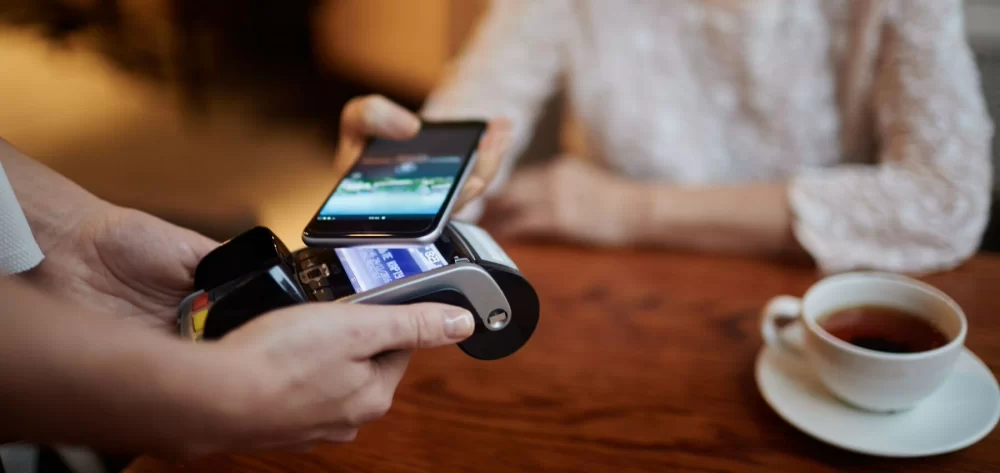Is 10 percent of the bill a decent tip? Who does the money go to? Hasn’t tipping been phased out in Switzerland? Read on to find answers to the most important questions about tipping in Switzerland.
What exactly is tipping?
When you dine at Swiss restaurants, you have the option of paying more than you actually owe for your bill if you want to. This extra money is called a tip – a term which is believed to have originated as an acronym for “to ensure promptness,” indicating it motivates employees to deliver better service.
Is tipping obligatory?
You are under no obligation whatsoever to pay any amount above what you owe for your bill. If you do not want to give a tip, you do not have to.
But in many Swiss dining establishments, it is customary to add a tip on top of the amount you owe. One reason for this is that the salaries of employees in the hospitality sector are often very low. Data from the Lohnbuch Schweiz shows that restaurant employees without management positions earn a median monthly salary of 3500 to 4400 francs.
Tipping people who provide hospitality services is often interpreted as personal recognition of good service – which encourages job satisfaction. If you do not tip, employees may interpret that as a show of dissatisfaction with the service you received.
What amount is appropriate for tips in Switzerland?
The customary tip size in Switzerland is equal to around 10 percent of the bill. Most commonly, the amount owed for the bill is rounded up, with the difference making up the tip. Whether or not the tip is exactly 10 percent of the bill is not important. For example, if your bill is 46 francs, you can round up the amount you pay to 50 francs, which would be am 8.7-percent tip.
For very small bills, simply rounding up the payment to the nearest franc is acceptable. But here too, the size of the tip should be equal to around 10 percent of the bill.
When would tipping be considered inappropriate in Switzerland?
It may seem odd to some, but giving very small tips at Swiss restaurants could be considered somewhat offensive. If you are unable to give a tip equal to at least five percent of your bill, then you had better just leave out the tip altogether. A couple of centimes is hardly considered a tip.
How can I give tips in Switzerland?
You can give tips either in cash or when paying by card. Payment methods which are accepted for bill payments can normally be used to cover tips as well.
If you pay with cash, you can just pay an amount equal to your bill plus the tip, and simply inform the person that you do not want any change.
If you pay by card, a little more planning is required. When you get your bill, tell the employee the exact, higher amount you want to pay instead (for the bill and tip combined). They can then enter this amount into the POS terminal before charging your card.
Some POS terminals give you the option of entering a separate amount for the tip. In this case, you are handed the terminal, and have to either type in the amount you want to tip, or skip the tipping process if you do not want to give a tip.
Important: When paying with card, the option of skipping the tip is sometimes difficult to spot. This can give the impression that you have to enter a tip in order to pay your bill, which is not the case. If you do not want to tip, do not simply press the ok button. Look at the payment terminal’s screen carefully, and find the option to skip the tipping process.
Typically, you can either choose a percentage-based tip (5, 10, or 15 percent, for example), or enter a specific amount.
Note: Always take a closer look at what is displayed on the POS terminal. That is especially true when a PIN is required for the payment. Accidentally entering your PIN into the tip field thinking it is the PIN field can result in your giving a very generous, four-digit tip.
Depending on the restaurant, you may not have the option of adding a tip to your bill when making cashless payments. In this case, you can always give the tip in cash, separately from the bill. Tipping with cash is generally less complicated than tipping with cashless payment methods.
Small businesses like bars and cafés often have a jar or piggy bank for tips. You can tip the staff by tossing money – such as change you receive when paying your bill – into this container.
Was tipping ever abolished in Switzerland?
Since 1974, Swiss hospitality service providers are required to pay their employees a full salary. That means employers have to pay their workers a regular minimum salary, and not count on tips to make up part of their employee’s income.
That is often interpreted to mean that tipping has been abolished. But in actual fact, it only means that employees are no longer dependent on tips for their basic income. But voluntary tipping is still considered part of dining at many Swiss restaurants, partly because minimum salaries in the hospitality sector are somewhat low. The median salary of non-specialized restaurant workers is between 3500 and 4400 francs per month, depending on their age.
Where does my tip money go?
In most cases, tipping is done alongside bill payments. But that does not mean that the person who served you or collected the payment actually gets to keep the tip money. Many restaurants pool tip money and divide it between all employees, which allows kitchen staff to benefit from guest generosity as well.
But if you want your tip money to go to a specific employee, you can clearly specify this. If you do not, and the businesses does not have any special structure for designating tips, then the tip money belongs to the person who collects it.
Tip money placed into tip containers or charged to your card is normally divided up between employees. The way in which money is divided varies from one business to another.
More on this topic:
Simple ways to save money on restaurant dining in Switzerland




